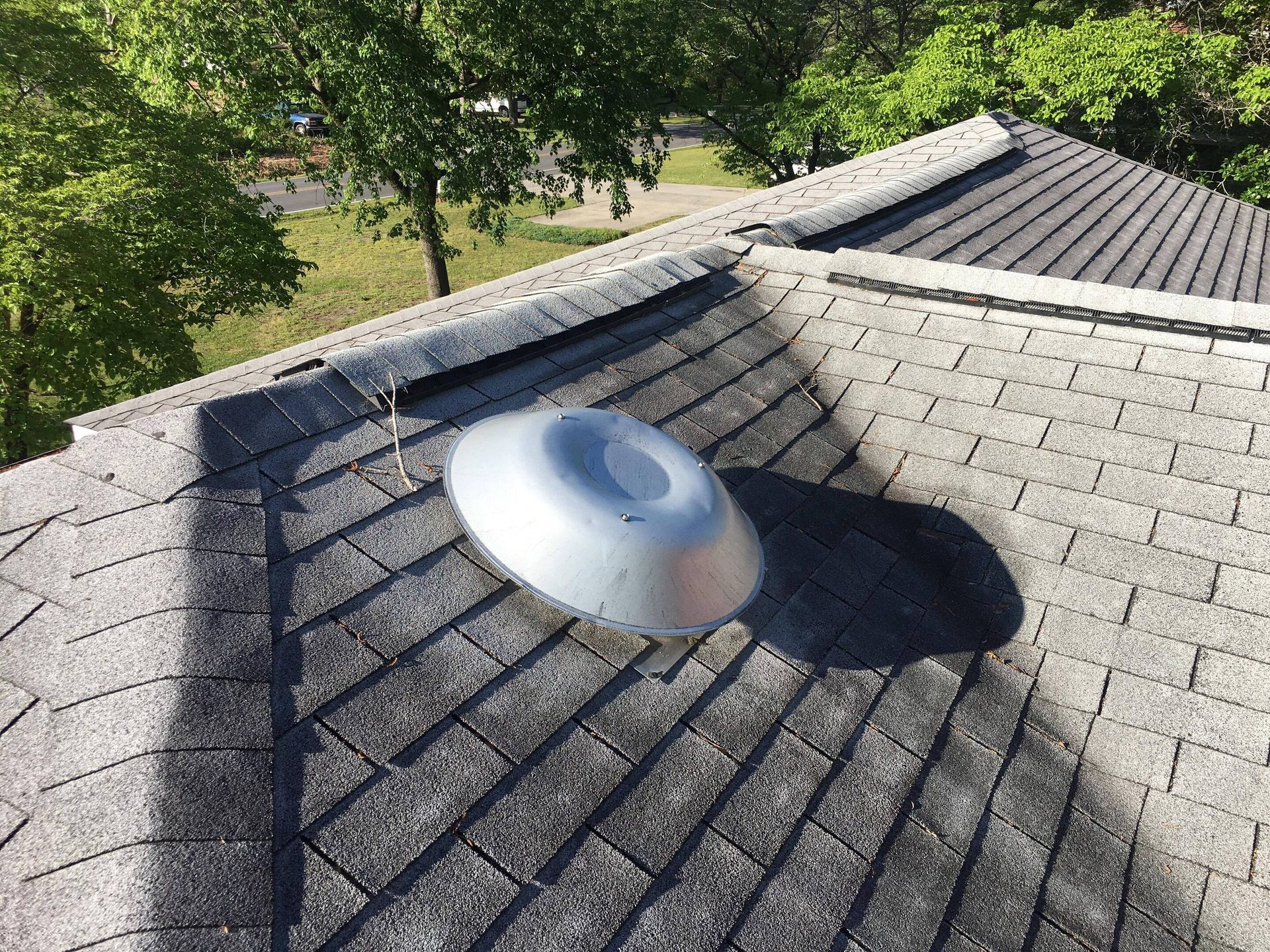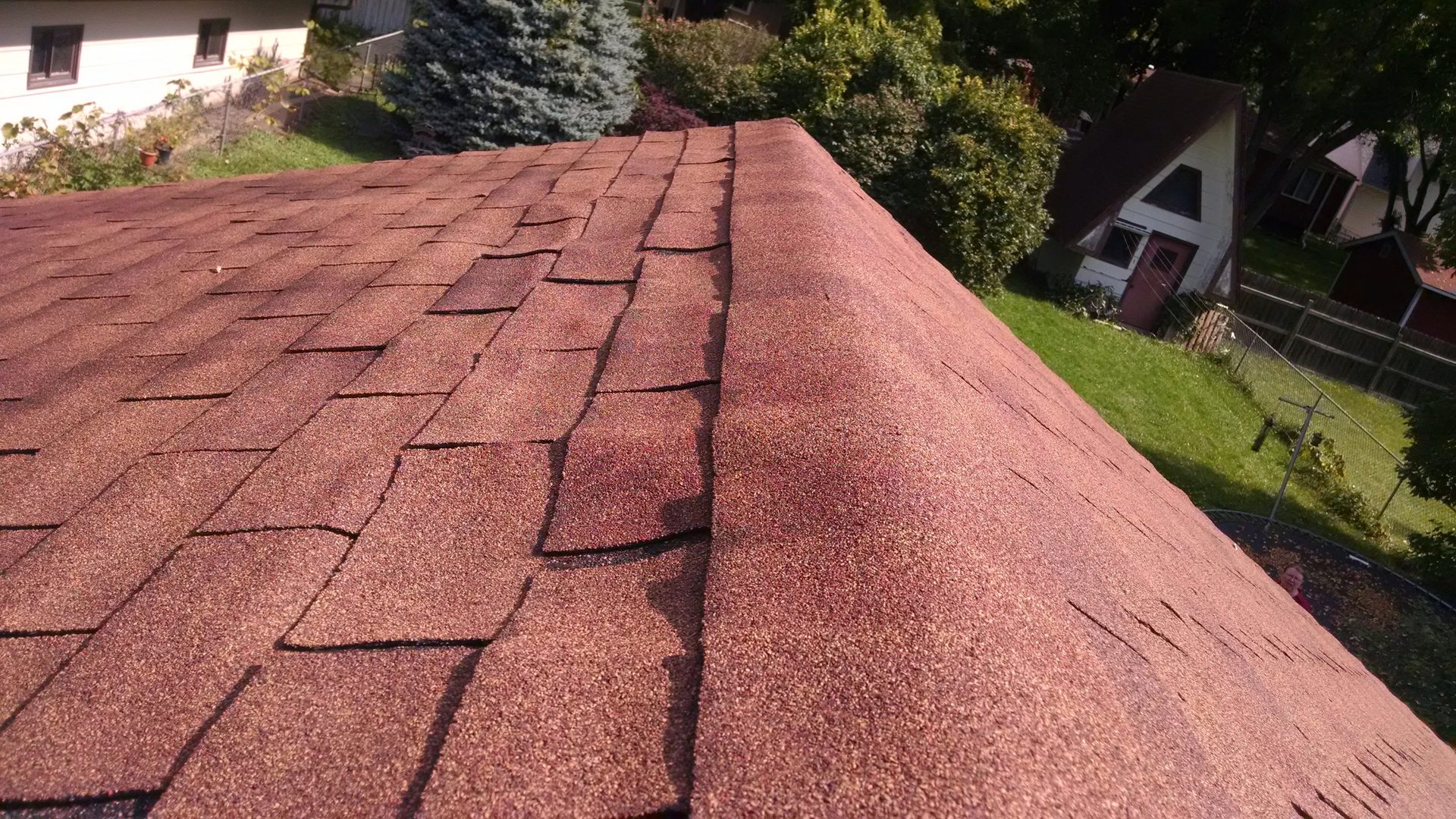
GUEST
COLUMN

Paul
SCELSI
Photos courtesy of Air Vent Inc.
SCROLL
DOWN
XX
Experts say roofers shouldn't mix different types of vents on roofs, as seen here.
What Attic Venting Questions are Roofing Pros Asking?
Top 5 FAQs asked and answered
One of the most popular segments of our educational seminars is the “Question and Answer” session. That’s when members of our industry can ask whatever is on their mind: roofing contractors, home builders, remodelers, building materials wholesalers, retailers, home inspectors, architects, and even homeowners.
Here are the top five questions asked and answered from our most recent seminar season.
Question #5 is from our seminar in Austin, Texas
"When calculating the number of attic vents needed, do you factor in either the roof pitch or the attic volume?"
Building Code does not factor in either roof pitch or attic volume. However, our calculating tools include three roof pitch ranges to choose from:
- Up to 6/12 roof pitch in which the number of vents is based on 1/150 airflow ratio (that’s 1 square foot of Net Free Area for every 150 square feet of attic floor space)
- From 7/12 to 10/12 roof pitch in which we increase the quantity of vents needed by 20% to account for the larger volume in the attic
- From 11/12 roof pitch and steeper, in which we increase the quantity of vents needed by 30% to account for even more attic volume.
Question #4 is from our seminar in Baton Rouge, La.
"Why wouldn't everyone use an internally filtered ridge vent or attic exhaust vent for an extra layer of weather protection in all climates, not just harsh winter weather?”
People in harsher winter climates tend to recognize the need for the internal weather filter more than those in milder climates, but the filter offers protection in all climates. Internally filtered vents offer an extra layer of weather protection from wind-driven rain, snow, and debris, and the airflow reduction over decades of use is very minimal. There’s third-party testing on our YouTube Channel showing the long-term airflow performance.

To prevent damage from improper ventilation, like the warped shingles seen here, check out the #2 most frequently asked question.
Question #3 is from our seminar in Wichita, Kan.
"What's the best strategy to get insurance to stop asking us to reuse the attic vents after a storm because the insurance company says the vents look to be in good condition still?"
Show insurance the Technical Bulletin “Why Ventilation is Important” published by the Asphalt Roofing Manufacturers Association. ARMA is the professional association representing shingle manufacturers. That Technical Bulletin states: "Replace the vents in the field of the roof every time a new roof is installed."
Thus, the various brands of shingles are saying do not reuse the attic exhaust vents with a new roof installation. Explain to insurance, “I’m not supposed to install a new roof with old vents.”
There are many reasons not to reuse the attic exhaust vents in the field of the roof, including damage that can occur to the vents during the removal process. We dedicated podcast episode #48 to this topic: “Do Not Reuse Attic Exhaust Vents.”
Question #2 is from our seminar in Grand Rapids, Mich.
"What should the temperature in the attic be if the attic ventilation is properly balanced 50% intake and 50% exhaust?"
In the winter/colder months, the attic temperature should be as close to the outside ambient temperature as possible to help fight ice dams. This will help any snow on the roof melt uniformly. In the summer/warmer months, the attic temperature should be no more than 20 degrees warmer than the peak outside ambient temperature that day.
Question #1 is from our seminar Raleigh, N.C.
"From a supply chain/distribution perspective, should I start speaking up when I receive orders from roofing contractors or builders for both ridge vents and box vents to be installed on the same roofing project?"
Yes, please speak up. Explain to the customer that if it's a shared/common attic space, avoid mixing different types of attic exhaust vents; otherwise, it short-circuits the airflow and could lead to weather infiltration. Avoid mixing any of the five types of attic exhaust vents: Wind turbines, gable vents, box vents or off-ridge vents, power fans, and ridge vents.
The most efficient way to move air through an attic to fight heat buildup, moisture buildup, and ice dams is to have air enter at the lowest possible location near the eave/soffit and exit high at or near the roof peak with nothing in between. Explain to the customer that the vent manufacturers say, “Don’t mix attic exhaust vents.” The shingle manufacturers say, “Don’t mix attic exhaust vents.” And building code says in section R806 of the International Residential Code, “Ventilators shall be installed in accordance with the manufacturer’s instructions.”
The strength of your roofing business does not lie just in how well you install, but it lies in how well you communicate.
A Message for Roofing Leaders
Roofing is still a relationship business. As a roofing company, you’re not just building roofs but building relationships. And relationships are built on communication. People let you on their homes/offices, which are their most valuable assets. If they don’t trust you to communicate, they will not trust you to build.
So, forward-thinking roofing contractors are looking beyond nails and shingles. They are investing in customer experience, and SMS is the easiest and most effective place to start.
The strength of your roofing business does not lie just in how well you install, but it lies in how well you communicate.
As the roofing industry is constantly evolving, roofing contractors using modern communication tools like SMS will stand taller than those without. In short, in a roofing business, every lead counts, and every appointment matters. Therefore, texting is not just a luxury; it is a necessity. It keeps your jobs on track, your customers informed, and your business growing.
*Based on testing conducted by a third party in 2017 using UltraPly™ TPO SA versus standard adhered TPO. Application times vary with settings and environmental factors; actual results will vary.
**ISOGARD polyiso insulation performed up to 40% better in cold temperature 40°F (4°C) applications according to ASTM C1289 standards than major competitors when tested by an independent third party in September 2022. The increased R-value per inch indicates better thermal performance in cold temperature 40°F (4°C) from the same roofing systems using the same amount of insulation compared to leading competitive products on the market today. Results may vary.
Paul Scelsi is marketing communications manager at AirVent and leader of its Attic Ventilation: Ask the Expert™ seminars (gibraltarbuildingproducts.com). He hosts the podcast, “Airing it out with Air Vent,” and he’s the chairperson of the Asphalt Roofing Manufacturers Association Ventilation Task Force.


